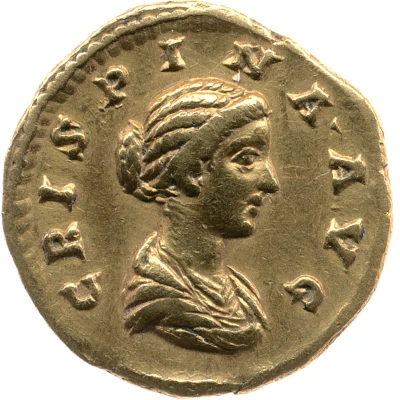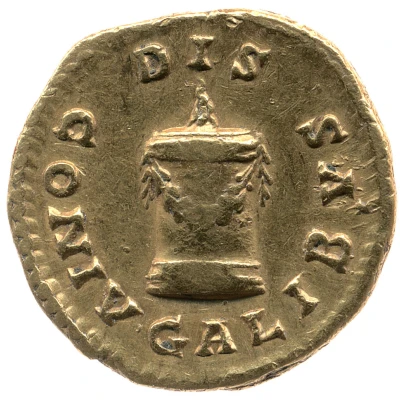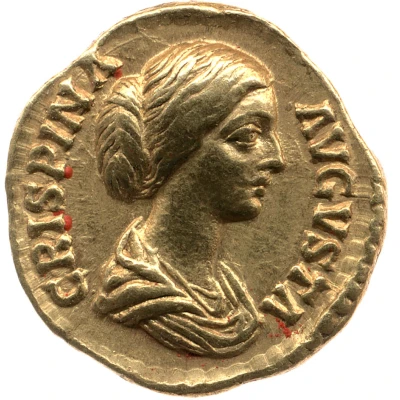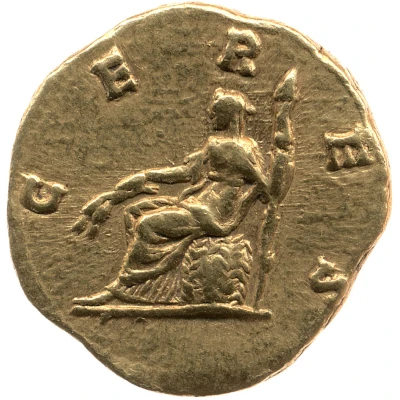


© Trustees of the British Museum
Aureus - Crispina DIS CONIVGALIBVS
| Gold | 7.2 g | - |
| Issuer | Rome › Roman Empire (27 BC - 395 AD) |
|---|---|
| Emperor | Commodus (Lucius Aurelius Commodus) (177-192) |
| Type | Standard circulation coin |
| Years | 178-191 |
| Value | 1 Aureus = 25 Denarii |
| Currency | Denarius, Reform of Augustus (27 BC – AD 215) |
| Composition | Gold |
| Weight | 7.2 g |
| Shape | Round (irregular) |
| Technique | Hammered |
| Demonetized | Yes |
| Updated | 2024-10-05 |
| Numista | N#265542 |
|---|---|
| Rarity index | 100% |
Reverse
Garlanded and lighted conical altar.
Script: Latin
Lettering: DIS CONIVGALIBVS
Comment
Example of this type:Trustees of the British Museum
Source:
Online Coins of the Roman Empire (OCRE)
Interesting fact
The Aureus - Crispina coin was minted during the reign of Emperor Marcus Aurelius (161-180 AD) and features a unique design on its reverse side. Instead of the usual depiction of a deity or a personification of a virtue, the coin features a portrait of the emperor's daughter, Crispina, who was known for her beauty and intelligence. This makes the coin a rare example of a Roman coin that features a female figure as its central motif. Additionally, the coin's inscription, "DIS CONIVGALIBVS," translates to "Divine conjugal pair," which suggests that Crispina was seen as a symbol of imperial harmony and unity.

